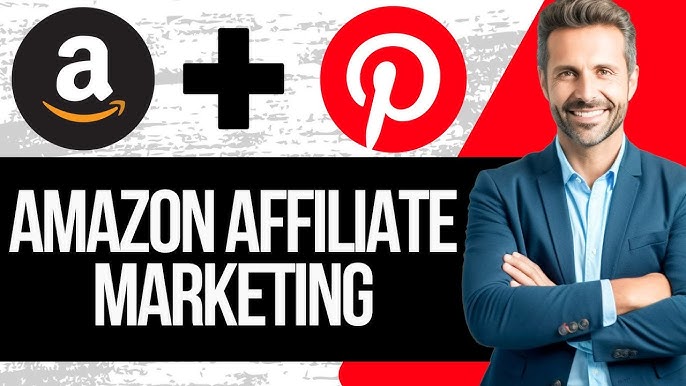Startup Product Development: Essential Steps and Strategies
In the fast-paced world of startups, the development of a new product requires a roadmap that combines foresight, precision, and a whole lot of creativity. Navigating this path isn’t easy – it’s peppered with obstacles that can derail even the most promising idea. Only through careful planning and thoughtful execution, can one transform their idea into a viable product. But don’t fret, let’s break this process down together into essential steps and strategies.
Contents
- Idea Evaluation and Validation
- Market Research and Analysis
- Identifying Target Audience
- Product Vision Statement
- Building a Minimum Viable Product
- Product Development Planning
- Achieving Product-Market Fit
- Funding Strategies for Development
- Effective Team Building
- Product Testing and Feedback
- Iteration and Improvement
- Product Launch and Marketing
- Final Thoughts
- FAQs
Idea Evaluation and Validation
Product development in the startup sector starts with an idea. But not all ideas are brilliant, hence the need for idea evaluation and validation. This process helps to ensure you’re venturing into something worthwhile. After all, approximately 90% of startups fail due to a lack of market need for their product.
Idea validation essentially means ensuring your product is something people want or need. Startups could employ simple methods such as carrying out a survey or discussing the idea with potential customers. Soliciting feedback from customers during this stage has shown positive results: startups that did this were more likely to succeed.
In addition to customer feedback, another form of validation is benchmarking against successful products in the market. If similar products are doing well or there’s evidence of demand for such products, it provides certain assurances that your idea could have potential.
This stage also involves patent checks if necessary. With startups having a 35% more chance of success if they patent their innovations, it’s crucial to verify whether your product idea infringes on any existing patents early in the process.
Market Research and Analysis
A solid understanding of the market landscape is paramount before delving into product development. Extensive research about potential competitors, market trends, pricing strategies etc., can provide essential insights. It was found that a whopping 29% of startups fail because they do not align their product with market demand.
Primary research such as surveys or interviews can be conducted to gain direct feedback from your target audience. Secondary research, on the other hand, relies on existing data and studies which could be sourced from databases, reports etc. These methods arm you with a robust understanding of opportunities and threats in your chosen market segment.
Time is also an important factor here. “Time to market”, as it’s commonly called, should be optimized because delays in launching new products can lead to lost revenues and competitive advantage. Alas, around 80% of new products miss their launch dates. Hence, strategic planning and efficient use of limited resources must be employed.
Identifying Target Audience

Your product is for your customers – hence identifying who they are is essential. Specifying the target audience will help in designing a product that meets their requirements as well as in crafting marketing strategies that resonate with them.
In this stage, demographics such as age, gender, income level, occupation etc., can be used to define the target audience. But don’t stop there! Get into their heads – figure out their preferences, motivations and pain points.
While trying to keep your target audience content, don’t forget your bottom line! Insight into this audience should not only help design a likable product but one they would also be willing to pay for. Remember, about 45-55% of projects go over budget, hence price setting should bear this in mind as well.
Product Vision Statement
A good product development strategy requires a clear and passionate vision for the product. This vision directs your development efforts and serves as a roadmap for your startup team. It can also be extremely motivating during challenging times.
Creating a product vision statement usually involves identifying the problem the product aims to solve, envisioning the product’s potential impact, and clarifying its goals. A powerful vision statement can also aid in rallying support from investors or stakeholders.
Take time scale this hurdle meticulously, because it can have a significant impact on your product’s success.
Building a Minimum Viable Product
The concept of a Minimum Viable Product (MVP) is integral in startup culture these days. An MVP is the simplest version of your product that solves the core problem you’re addressing. The advantage of an MVP is that it allows for collecting maximum validated learning about customers with minimal effort.
Building and launching an MVP allows startups to understand their users’ needs better, validate their assumptions, and iterate on their product quickly based on customer feedback. Interestingly, nearly 60% of successful startups have reported starting with an MVP!
Beyond validation, another crucial benefit of adopting the MVP approach is cost management. As Binaryfolks points out, this method provides organizations with a chance to test their product and make adjustments without incurring large upfront costs.
The development of an MVP consists of stages like requirements gathering, developing wireframes or prototypes, and user testing. Such processes hinge on seamless collaborations between all involved parties – mainly product designers and developers.
Note that these stages are not strictly linear but are iterative. Feedback loops are important parts of these steps, which supports agile practices – leading to a 60% improvement in revenue and profit growth.
Product Development Planning
Following the MVP stage, startups move towards detailed product development planning. A thought-out roadmap is essential to outline the activities that will be carried out, budgets, timelines, and resources. It provides a clear path towards achieving your product vision.
Breaking down the plan into manageable tasks can help teams visualise progress and keep track of relevant milestones. Considering that 45-55% of projects go over budget, detailed planning aids in cost control and management of resources.
With around 80% of new products missing their launch dates, strategic timeline planning is crucial. Remember, time-to-market is a significant determinant in startup success. Therefore, product development planning should also account for potential issues that may cause delays and prepare contingency plans to mitigate them.
The use of project management tools could be beneficial during this stage. They can aid in intelligently allocating tasks to team members and tracking progress meticulously.
Achieving Product-Market Fit

Achieving product-market fit means that your product has found its place in a viable market – customers are buying it, using it, and it’s satisfying their needs. With nearly 29% of startups failing due to misalignment with market demands, achieving this fit is crucial for survival.
To get to this critical juncture in your startup journey, understanding your target audience and incorporating their feedback into your product design needs to become second nature. Seriously consider customer pain points, preferences, and motivations discussed during the target audience identification phase.
Iterating your MVP based on customer feedback can help align the product with market needs. The value of this approach is backed up by facts: nearly 60% of successful startups reported starting with an MVP. This agile methodology brings a significant improvement in revenue and profit growth.
Remember, the combination of a desirable product and willing customers willing to pay for it – this is the sweet spot you’re aiming for, otherwise known as product-market fit.
Funding Strategies for Development
Developing a new product isn’t cheap. Funding is a major hurdle that startups need to overcome. Given that 45-55% of projects go over budget, having a solid financial plan in place can be a saviour.
Apart from personal savings, friends and family or crowdfunding, startups can look towards venture capitalists or angel investors to fund their product development. Government grants designed for technological innovations are another route worth exploring.
When seeking investors, your product vision statement will come in handy. It can inspire potential investors to believe in your project, seeing the potential impact of your solution. Patented innovations also increase credibility, with startups showcasing such patents being 35% more likely to succeed.
Grasping your product’s potential market value is key when preparing your budget and deciding funding strategies. This ensures sustainability throughout the course of your product development.
Effective Team Building
The saying goes: it takes a village to raise a child. Similarly, it takes a well-rounded team to bring a new product to life. Often regarded as one of the most critical aspects of startup success, having the right team cannot be overstated.
The composition of your team should reflect the different aspects involved in developing your product – be it design, coding, marketing, sales or customer support. Assemble a team equipped with diverse skills to anticipate and address the challenges you’re bound to encounter in your journey from MVP to a fully developed product.
Creating an environment open to learning and communication is equally crucial. With companies who adopt Agile practices seeing a 60% improvement in revenue and profit growth, fostering a culture that encourages brainstorming, iteration, and learning from mistakes can be beneficial.
Product Testing and Feedback
Your product is nearing completion, but it’s essential not to rush its launch. Product testing ensures that the product functions as expected, is user-friendly, and has no bugs that could hamper user experience.
Taking into account usability and user experience design during this stage ensures the product will provide value to its audience. To aid in this process, startups can use alpha or beta testing methodologies where early versions of the product are released to select users.
Feedback loops should also be established – consider monitoring user actions or directly soliciting feedback. This information allows for necessary alterations before a full-scale launch and helps align your offering with customer needs, moving you closer to that coveted product-market fit.
Achieve significant traction by incorporating customer insights iteratively into your development process. Many startup success stories have started with listening to their customers – yours could be next!
Iteration and Improvement
When it comes to successful startup product development, you should embrace the concept of continuous iteration and improvement. As the statistics state, startups that regularly obtain customer feedback and validation during development are more likely to succeed. Around 29% of startups that didn’t validate their ideas with customers failed due to lack of product-market fit. So listen carefully to your customers because they have a pivotal role in shaping your product.
Also, consider starting with a Minimal Viable Product (MVP). This is the most fundamental version of the product which allows collection the maximum amount of validated learning about your customers with minimum effort. Nearly 60% of successful startups reported starting with an MVP. This approach aids in testing assumptions at a lesser cost while allowing for quick iterations.
Keeping focus on Agile practices during your product development process can improve revenue and profit growth by up to 60%. The emphasis on iterative development and flexibility lets you adapt swiftly to changes, avoid extensive increases in costs, and prevent budget overruns, which, as per estimates, occur in 45-55% of projects.
No matter how robust your original idea may be, adjustments and modifications are often necessary. Remember that upwards of 90% of startups fail, frequently due to lack of a market need for their product. Iteration helps refine your product to meet market requirements better and increase its odds of success.
Product Launch and Marketing
The launch phase is vital for creating excitement and building anticipation for your product. A successful launch creates a powerful impact and can set the tone for future sales. Therefore, accelerating ‘time to market’, which is the duration from ideation to introducing the product in the marketplace is often beneficial. Bear in mind that around 80% of new products miss their launch dates as per findings by the 280 Group.
Analyze the market, understand your competition, and identify your target audience before setting a launch date. In addition to product quality, timing can also play a critical role in the success of a launch. Avoid periods where market attention may be diverted, like major holidays or high-profile events.
Moreover, you should take proactive steps to secure your product’s intellectual property prior to the launch. Research indicates that startups that have patented their innovations are 35% more likely to succeed. This is an often-overlooked step in the development process that can give your startup a significant advantage.
Lastly, marketing shouldn’t be an afterthought. It starts way before your product hits the market and continues post-launch. An effective marketing strategy not only amplifies awareness but also fosters engagement with potential customers which is crucial for obtaining feedback and for continuous improvement.
Final Thoughts
To sum up, successful startup product development effectively blends appropriate validation methods with customer involvement, Agile practices, and judicious financial planning while maintaining focus on quick iterations. Achieving shortened time-to-market with a well-timed launch ramps up anticipation while securing intellectual assets ensures overall business viability. Recommended emphasis on innovative ideas substantiates the SBA findings that smaller companies produce significantly more patents per employee. Embrace these insights to enhance your startup’s journey towards profitable growth and success.
FAQs
- 1. What is the importance of idea validation in startup product development?
- Idea validation ensures your product is something people want or need. It’s meant to evaluate whether your idea would be worthwhile in the marketplace. Startups that validate their ideas with customers early are more likely to succeed.
- 2. Why is identifying the target audience necessary?
- Knowing your target audience helps in designing a product that meets their requirements and crafting marketing strategies that resonate with them. It helps you better understand their preferences, motivations and pain points and thus, design a profitable product.
- 3. What is a Minimum Viable Product (MVP)?
- An MVP is the simplest version of your product that solves the core problem you’re addressing. Building an MVP allows startups to understand their users’ needs better, validate their assumptions, and iterate on their product quickly based on customer feedback.
- 4. Why is a product vision statement required?
- A product vision statement directs your development efforts and serves as a roadmap for your startup team. It’s a description of what the founder envisions for the product in the future and can also be extremely motivating during challenging times.
- 5. Why should a startup consider developing patents?
- Patents increase the credibility of a startup and can act as a defensive mechanism against the competition. It’s been found that startups showcasing patents are 35% more likely to succeed.
- 6. What is ‘time to market’ and why is it important?
- Time to market is the duration from ideation to introducing the product in the marketplace. Accelerating ‘time to market’ can lead to increased revenues and a competitive advantage. It’s important to balance time-to-market with maintaining product quality.
- 7. What is product-market fit?
- Achieving product-market fit means that your product has found its place in a viable market – customers are buying it, using it, and it’s satisfying their needs. This is a crucial point in the startup journey, and success strongly depends on reaching this fit.
- 8. How does continuous iteration help in product development?
- Continuous iteration aids in refining your product to better meet market requirements and successfully adapt to changes. Emphasizing iterative development and flexibility helps avoid extensive costs and prevent budget overruns.
- 9. What is the importance of funding strategies?
- Funding is essential for development and also for controlling costs. Having a solid financial plan enables a startup to sustain throughout the course of product development and mitigate the risk of budget overflows.
- 10. Why is team building crucial in product development?
- A diverse team equipped with different skills can anticipate and address various challenges encountered during development. An efficient team can work together to achieve the product vision and provide different perspectives on the same problem, leading to effective solutions.










